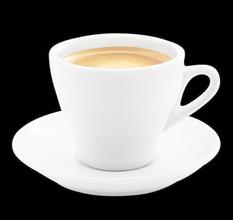Description of the Flavor of Brazilian Yellow bourbon hand-washed Coffee beans by Grinding scale treatment
Description of the Flavor of Brazilian Yellow bourbon hand-washed Coffee beans by Grinding scale treatment
Although Brazil is one of the countries with the most abundant freshwater resources in the world, the distribution of water resources is uneven, and many regions have to rely on natural draught. Especially in the east where coffee cultivation is concentrated, serious droughts often occur, and scarce water resources limit the way coffee is processed. Before 1990, Brazil almost all used rough sun exposure, and the quality varied greatly. Because bird poop coffee fruit in the process of exposure for up to two to three weeks, when the rain returns to tide or the fruit is cracked, it will become moldy and smell. As a result, Brazilian beans have become synonymous with low-and medium-quality. As the world's largest coffee producer, how can it be reconciled to such a reputation? in order to improve its quality and reverse its image, Brazil carried out a quality revolution in the 1990s and vigorously promoted the global half-sun method.
In the face of this "yellow" wind, I also joined in the fun, so I got some raw beans from the Guangzhou coffee salon to try something fresh. On the last night of the National Day holiday, the long-awaited "yellow" wind finally arrived in Beijing into early autumn, and sooner or later it has been able to feel the coolness. At the same time, a "yellow" wind from Brazil is also blowing quietly. Recently, yellow bourbon coffee from Brazil has been sold in several places.
Coffee is now cultivated in new places inland, thanks to natural benefits. Panama became famous after the war as a new coffee producer in Brazil, and because its natural conditions are not superior, it is still inferior in quality compared with that produced in Sao Paulo. Now in the northern part of the state of Sao Paulo, Lieberon, Bredo, and Franka, the interior of Mogianashi is the best producer of Brazilian coffee.
Brazilian coffee accounts for 30% to 35% of the world's annual output, ranking first in the world, but it is a pity that none of the Brazilian beans can be called cutting-edge coffee. There are coffee trees all over the mountains, distributed in the southern part of Brazil. Compared with other coffee-producing countries in Central and South America, Brazil is significantly lower, with farms mostly about 600-1000 meters above sea level, and even South Minas, Serrado and Mojiana, the three major boutique producing areas, rarely exceed 1300 meters. Brazil's terrain is too flat and monotonous for coffee cultivation, and lacks a microclimate that gives coffee rich taste factors, so it is suitable for growing Kaddura, New International and Kaduai, which do not need shade.

Important Notice :
前街咖啡 FrontStreet Coffee has moved to new addredd:
FrontStreet Coffee Address: 315,Donghua East Road,GuangZhou
Tel:020 38364473
- Prev

The taste characteristics of Yunnan geisha coffee beans the description method of price flavor
Yunnan geisha coffee beans taste characteristics, variety characteristics, price flavor description method Yunnan's geographical environment is very superior. Most coffee trees are planted at about 2000 meters above sea level. High altitude, rich sunshine, heavy rainfall, fertile land and large temperature difference between day and night are all unique and suitable for the growth of boutique coffee. The planting history of Yunnan coffee can be traced back to 1892.
- Next

Brief introduction of grinding scale production area of Honduran coffee beans by taste and flavor treatment
Brief introduction to the production area of the grinding scale for the taste and flavor treatment of Honduran coffee beans in detail, it has a medium or shallow acidity, giving the feeling obvious but not strong. Sometimes with a slight floral or fruity aroma (generally speaking, different producing areas, different elevations of beans have different flavor performance) slightly bitter and obvious sweet. The taste of Honduras is well balanced and sour.
Related
- Detailed explanation of Jadeite planting Land in Panamanian Jadeite Manor introduction to the grading system of Jadeite competitive bidding, Red bid, Green bid and Rose Summer
- Story of Coffee planting in Brenka region of Costa Rica Stonehenge Manor anaerobic heavy honey treatment of flavor mouth
- What's on the barrel of Blue Mountain Coffee beans?
- Can American coffee also pull flowers? How to use hot American style to pull out a good-looking pattern?
- Can you make a cold extract with coffee beans? What is the right proportion for cold-extracted coffee formula?
- Indonesian PWN Gold Mandrine Coffee Origin Features Flavor How to Chong? Mandolin coffee is American.
- A brief introduction to the flavor characteristics of Brazilian yellow bourbon coffee beans
- What is the effect of different water quality on the flavor of cold-extracted coffee? What kind of water is best for brewing coffee?
- Why do you think of Rose Summer whenever you mention Panamanian coffee?
- Introduction to the characteristics of authentic blue mountain coffee bean producing areas? What is the CIB Coffee Authority in Jamaica?

